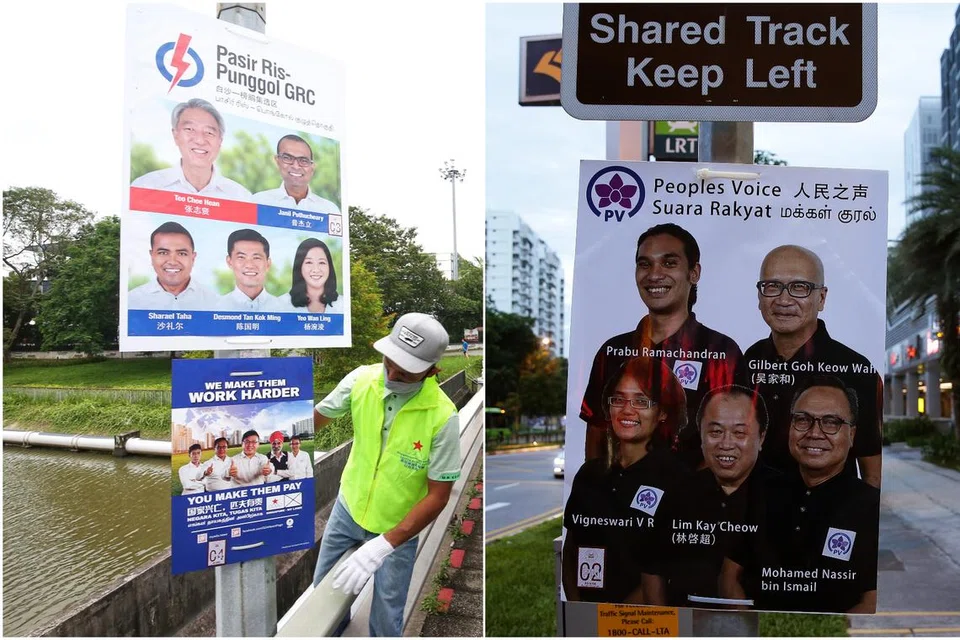- Joined
- Jul 25, 2008
- Messages
- 13,542
- Points
- 113
Budget 2025 both generous and responsible, say experts

Measures in the Budget for hawkers show Singapore is committed to preserving its hawker culture, said an expert.ST PHOTO: JASON QUAH
Anjali Raguraman and Hariz Baharudin
Feb 19, 2025
SINGAPORE – From private home owners and hawkers to those interested in sports and the arts, the Budget measures announced on Feb 18 provide support across diverse segments of society, reinforcing Prime Minister Lawrence Wong’s promise of a “Budget for all Singaporeans”.
Experts, observers and MPs told The Straits Times that the speech was notably comprehensive, reflecting the Government’s commitment to ensuring that no Singaporean would be left behind.
Several noted how the announcements made by PM Wong cast the spotlight on groups that are not typically featured, highlighting its inclusivity and broad reach.
Calling it an “even-handed approach Budget” that focuses on the social dimension as well as the economic dimension, Singapore Management University (SMU) law don Eugene Tan said that Budget 2025 seeks to get the balance right in dealing with top-of-mind concerns.
“It also attempts to recognise the concerns, needs and aspirations of different generations, as well as ensures the equitable distribution of the country’s wealth between those in public and private housing,” he said.
Something for everyone
Experts noted that several giveaways are extended to private property owners, a group that sometimes feels left out when goodies are distributed.PM Wong announced that all Singaporean families living in private property will receive $400 worth of vouchers to buy eco-friendly household appliances as an expansion of the existing Climate Friendly Households Programme.
Separately, he also said that the Enhancement for Active Seniors programme, which sees the Government pay for upgrades to homes to be fitted with age-friendly features, will also be extended to seniors living in private property.
Private home owners are often perceived as being able to take care of themselves, but the announcements show that some of them could be in need of help, said Mr Song Seng Wun, economic adviser at CGS International.
“Many are asset-rich but cash-poor. Because we have fiscal flexibility, the Government can afford to extend some support,” he said.
A slice of the Budget pie is set aside for hawkers, which shows that Singapore is committed to preserving its hawker culture, said Mr Song.
PM Wong announced $600 in one-time rental support for each hawker stall in centres managed by the Government or government-appointed operators.
In addition, up to $1 billion will be allocated over the next 20 to 30 years to the upgrading of ageing hawker centres and the building of new ones.
“Placing the measures for hawkers in the same statement as other key measures in the Budget gives it a certain importance,” said Mr Song.
Former offenders are another group that will benefit from Budget 2025. PM Wong said that the Uplifting Employment Credit, which provides a wage offset of up to 20 per cent of local former offenders’ wages for the first nine months, will be extended by another three years.
Bishan-Toa Payoh GRC MP Saktiandi Supaat, who is also Maybank’s head of foreign exchange research, said that this is good news, given how he has been advocating more support for former offenders.
Mr Saktiandi said that, together with targeted measures like additional financial support for large families and those in the middle-income groups, the Budget is a “forward-looking” one that extends assistance to those who need it.
“The broader aim of the announcements is to provide targeted help where needed,” he said.
Experts noted that Singapore’s strong fiscal position allows for more wiggle room for spending on other areas of Singaporean lives, such as arts and sports.
Referencing the newly introduced SG Culture Pass that will be rolled out in September 2025, CGS International’s Mr Song noted that Singapore has “reached a stage where we can have better work-life balance”.
In June, there will be a one-off $100 ActiveSG credit top-up to encourage participation in sports.
“(The Government is) spending on how to improve the way we work, how we play... Especially since people are living longer, work-life balance has become more important,” he said.
A measure of support for Singaporeans
Given that the Budget came ahead of the upcoming general election, observers told ST that generous giveaways were largely anticipated.But they noted that the measures also signal a long-term strategy to support everyday Singaporeans, families, workers and businesses amid an increasingly complex global landscape.
Associate Professor Tan Ern Ser, adjunct principal research fellow at IPS Social Lab, highlighted the quantum of CDC and SG60 vouchers announced in Budget 2025.
PM Wong announced that some 1.3 million Singaporean households will each get $800 in CDC vouchers, with $500 to be disbursed in May and the remaining $300 in January 2026.
All Singaporeans aged between 21 and 59 in 2025 will also get a one-time $600 handout in the form of SG60 vouchers, while seniors aged 60 and above will get $800.
“The amount of CDC vouchers for households, together with the SG60 vouchers for individuals, does come across as rather generous,” said Prof Tan.

The rising cost of living was addressed by the Budget, said Mr Yip Hon Weng, MP for Yio Chu Kang, who called the amount given out in the various vouchers “quite substantial”.
“There is a cost-of-living issue. The vouchers will come in handy for those really feeling the pressure daily. I think it will be well received on the ground,” he said.
SMU’s Prof Tan said that the announcement of the vouchers suggests that the Government recognises the persistent issue of costs, and that this is likely to be a significant issue in the upcoming general election.
The vouchers will help to some extent, but the feeling persists that Singapore has become too expensive, he added.
“The irony of the handouts is that the Budget statement seems to confirm this perception. Moreover, such help will be seen more as ‘Band-Aid’ and (the question is) whether the root causes can be better addressed,” said Prof Tan.
Budget 2025: All you need to know about the eight SG60 goodies, and how to get themBudget 2025: A bonanza Budget with no pain, and no red ink
Most observers agreed that despite the generous giveaways, the Government is still spending responsibly and within its means.
Mr Song said that it is common for politicians around the world to give out more handouts ahead of an election. “The key difference is that Singapore is spending within its means – using what we have today, not borrowing from the future,” he said.
Business associations such as the Singapore International Chamber of Commerce (SICC) said that this is a Budget that comes from a position of fiscal strength, and one with a vision to maintain that strength.
This would enable Singapore to address longer-term issues such as a rapidly ageing population, while staying nimble in a tough international environment.
“No segment of citizen society is left behind in this well-constructed, generous and impactful Budget... It balances short-term needs with long-term infrastructural and societal needs,” SICC said.
“It is bold, and demonstrates a government operating from a position of strength in the interests of the citizens of this country and its economy.”


































![ST20250122-202527400313-Lim Yaohui-pixgeneric/[HDB] [HOUSING]New blocks of Tampines GreenGem HDB BTO flats as viewed from Blk 953B Tampines Street 96 on Jan 22, 2025.Can be used for stories on budget, money, invest, URA, property, land, housing, population, economy, and development.(ST PHOTO: LIM YAOHUI) ST20250122-202527400313-Lim Yaohui-pixgeneric/[HDB] [HOUSING]New blocks of Tampines GreenGem HDB BTO flats as viewed from Blk 953B Tampines Street 96 on Jan 22, 2025.Can be used for stories on budget, money, invest, URA, property, land, housing, population, economy, and development.(ST PHOTO: LIM YAOHUI)](https://cassette.sphdigital.com.sg/image/straitstimes/001e32a51fb5c329b76f7cdcf3f70694068fee75e3607384a772822c3206c8ae?w=860)
